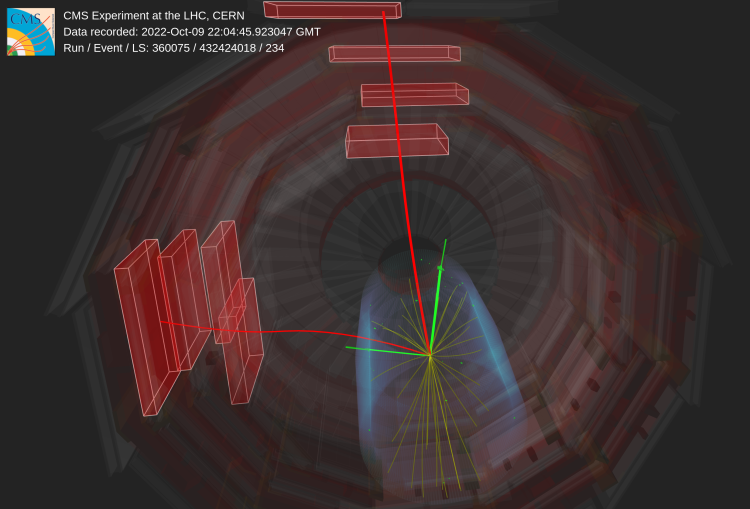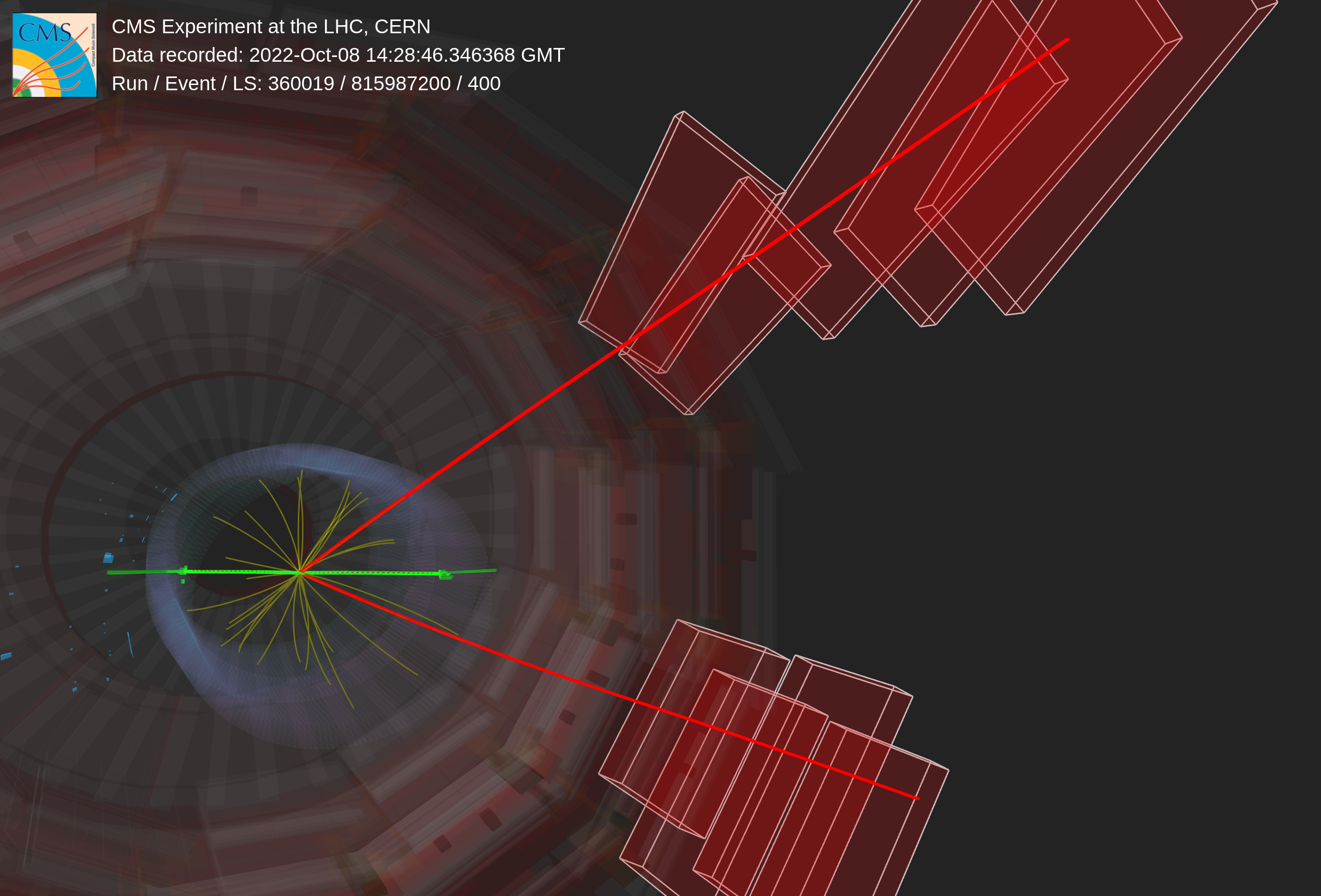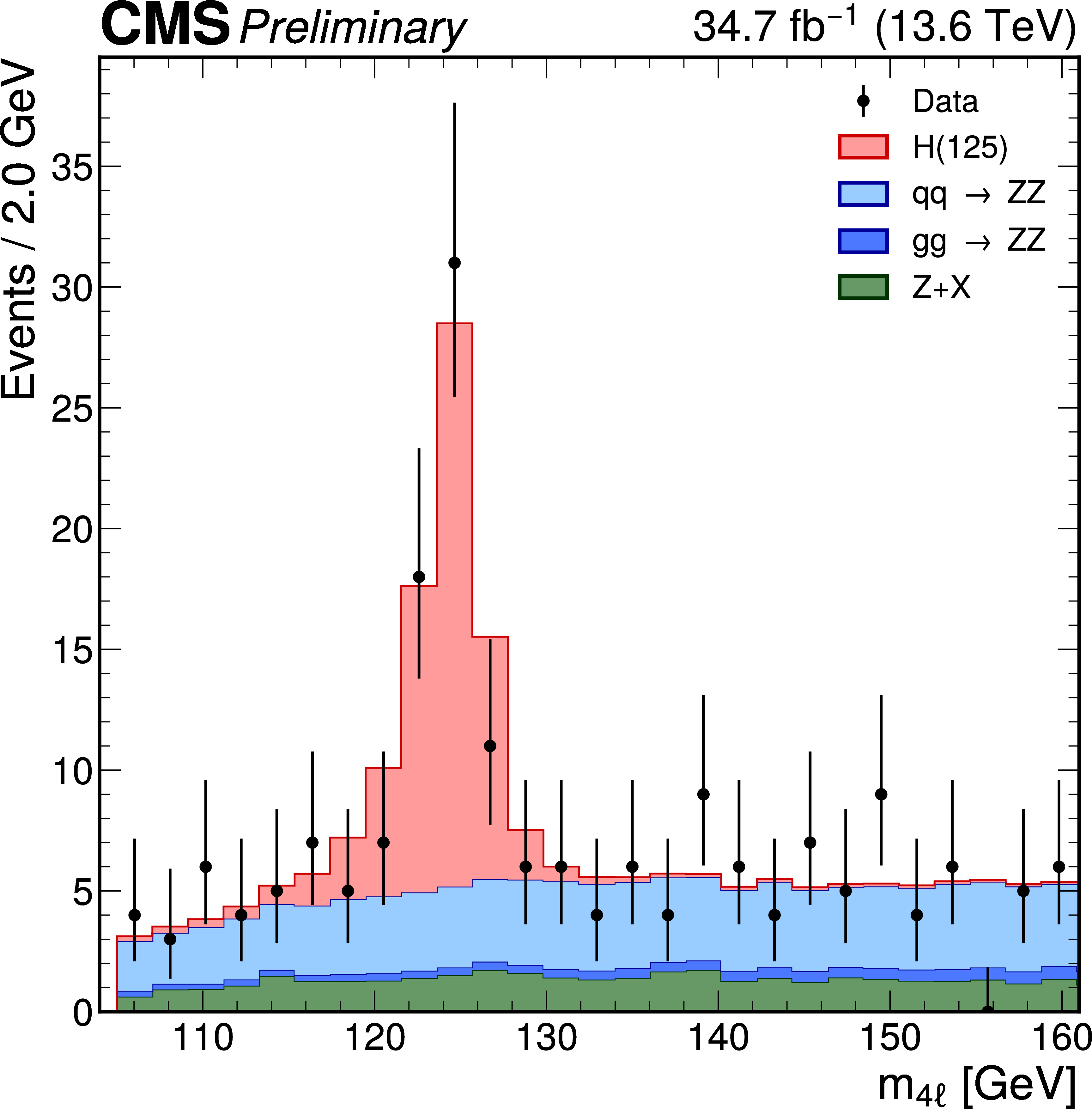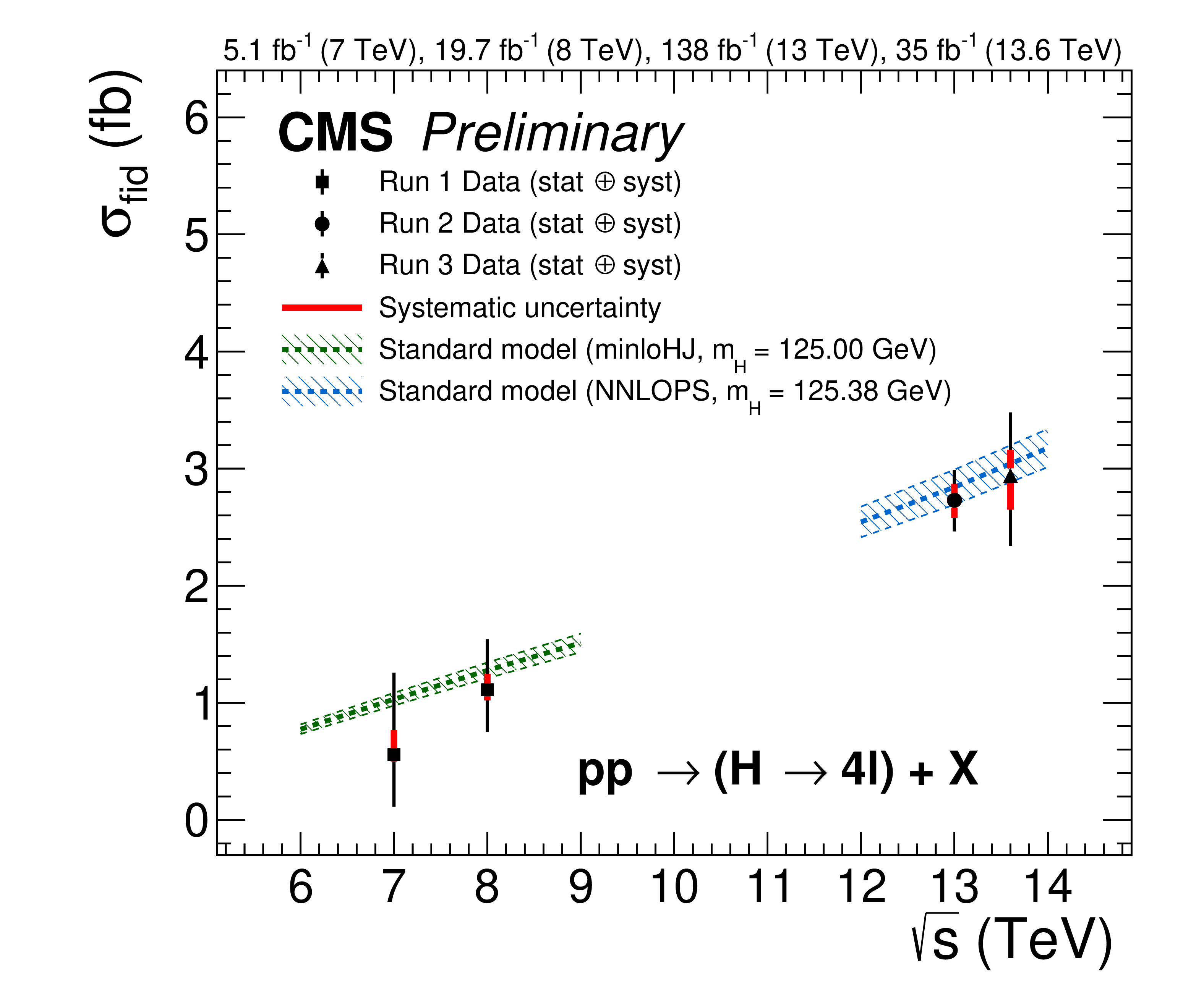
Going back to the origins, in a latest result, the CMS experiment rediscovers the Higgs boson and measures its rate of production in the "golden channel", now at the unprecedented centre-of-mass energy of 13.6 TeV.
The discovery of the Higgs boson in 2012 by the ATLAS and CMS collaborations is one of the most inspiring success stories of modern science. It took nearly five decades of experimental and technological advancements to confirm the existence of this cornerstone of the mechanism that gives mass to elementary particles. One of the key methods for identifying the Higgs boson was through its decay into four leptons (electrons or muons) via two Z bosons — a pathway known as the "golden channel".
Another decade later, in 2022, the LHC started colliding protons at an extraordinary centre-of-mass energy of 13.6 TeV, and the CMS experiment "rediscovered" the Higgs boson, and measured its rate of production. The aforementioned golden channel played a pivotal role once again in this result, owing to a very clear experimental signature (despite it still being very rare!). Figure 1 shows a Higgs boson candidate decaying into two electrons and two muons. The event was recorded by the CMS experiment in 2022, and shows two clearly identifiable electrons, which can be recognised by the green deposits of energy in the electromagnetic calorimeter associated with a track in the tracker detector; and two muons, which can be seen as the two red trajectories going out to the muon detectors.

Figure 1: A Higgs boson candidate event recorded by the CMS detector in 2022 in proton-proton collisions at a centre-of-mass energy of 13.6 TeV. The Higgs boson decays into two electrons (green energy deposits) and two muons (red trajectories).
The figure demonstrates the effectiveness and convenience of the four lepton decay channel, as it allows all the particles in the final state to be "seen" and reconstructed in the detector. This enables us to use the information about the kinematics of the reconstructed events to separate the Higgs boson signal from background processes. By deducing the kinematic properties of the events, we manage to reconstruct the invariant mass of the Higgs boson. Figure 2 shows the invariant mass distribution in simulated signal and background processes as well as data recorded by the CMS experiment. The Higgs boson signal distribution shows a clear peak above the "flat" background distributions, and the data are consistent with the presence of this peak.

Figure 2: Invariant mass distribution of the reconstructed and selected events in data and simulation. The Higgs boson distribution (in light red) peaks on top of the flat background distributions, and the data are consistent with this peak.
To confirm this rigorously, and extract further results, statistical analysis is performed. This allows us to measure the "cross section" of producing Higgs bosons in proton-proton collisions at the LHC (the cross section is a measure of the probability of a process to occur during elementary particle collisions). Figure 3 shows the result obtained at the record centre-of-mass energy of 13.6 TeV. The plot also shows the evolution of the cross section for the different energies at which the LHC has collided protons during its years of operation. The cross section values are observed to increase with the centre of mass energy, since the more the available energy, the higher the probability of the interaction to occur. All measured values are consistent with predictions of the standard model of particle physics.

Figure 3: Evolution of the cross section for the production of the Higgs boson in the four lepton final state as a function of the centre-of-mass energy.
The rediscovery of the Higgs boson and measurement of its production cross section in this crucial decay channel using 13.6 TeV data highlight the excellent quality of the collected data, and affirm the CMS Collaboration's readiness to further its extensive physics research.
Written by: Alessandra Cappati, for the CMS Collaboration
Edited by: Muhammad Ansar Iqbal
Read more about these results:
-
CMS Physics Analysis Summary (HIG-24-013): " Measurements of Higgs boson production cross sections in the four-lepton final state at 13.6 TeV "
-
@CMSExperiment on social media: Bluesky - Facebook - Instagram - LinkedIn - TikTok - Twitter/X - YouTube

